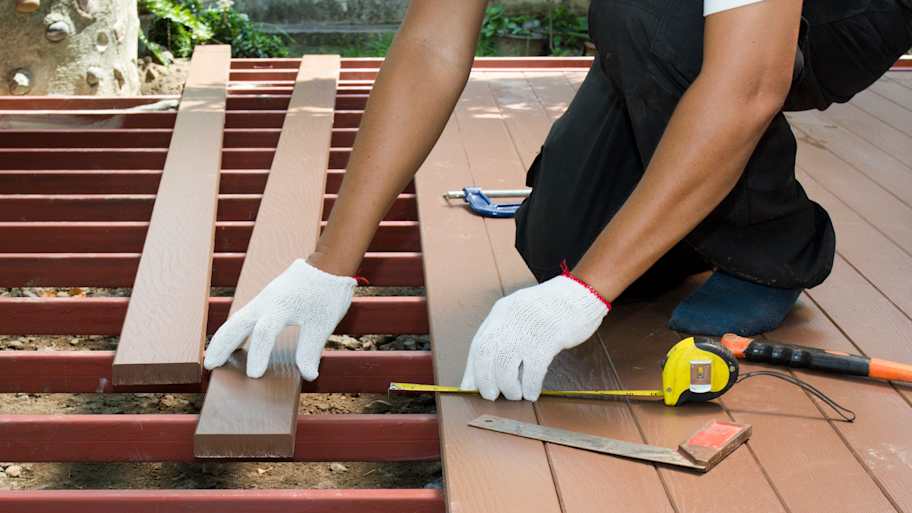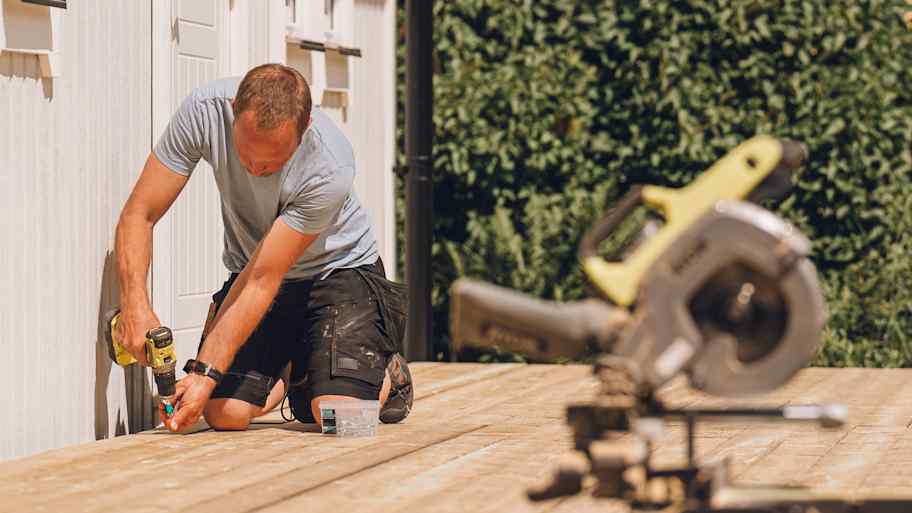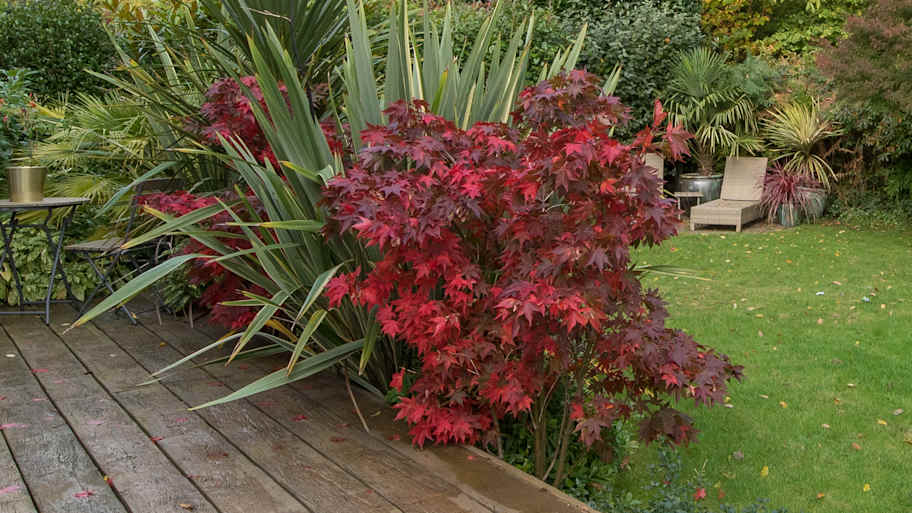Deck replacement costs depend on materials, any structural damage you need to fix, and more. This guide explores how much it costs to replace or repair a deck.
Why Are My Deck Boards Warping? 4 Common Causes and How to Fix Them
When your deck starts doing the wave, it’s time to straighten things out, literally


Moisture can cause both wood and composite decks to warp.
UV rays and heat can cause extensive damage, including curling.
Overly tightened deck fasteners can cause deck boards to buckle.
Proper airflow and ventilation are essential to your deck's longevity.
DIYers can address minor issues, but extensive damage requires a pro.
There is nothing like kicking back on your deck at sunset on beautiful, warm days—until you notice boards curling at the edges and lifting from the frame. Many homeowners wonder why their deck boards begin warping. Here, we break down the common causes and offer actionable solutions, including prevention, so you can enjoy your happy place again.
1. Moisture Damage

Both wood and composite deck boards can shift when exposed to moisture, though in different ways. Wood will naturally expand and contract due to rain and humidity. If one side of a board dries faster than the other, it can cause cupping or bowing.
While composite decking is more stable overall, it is not immune to swelling or distorting, especially if the boards' ends are uncapped, exposing the inner materials.
For severely warped boards, the cost to repair or replace a deck hovers around $2,160, with board replacement ranging from $500 to $4,000. However, there are ways homeowners can address minor warping.
The Solution
Dampen the warped wood boards evenly and weigh them flat while they dry to help them return to shape.
Use a heat gun on wood or composite boards and clamp them flat to encourage reshaping.
Seal or reseal wood boards after fixing them to lock out moisture.
Ensure that the ends of composite boards are sealed after repair to keep out moisture.
2. Sun Exposure and Heat
Prolonged direct sunlight can dry out wood deck boards, especially if only one side is exposed. Over time, this uneven drying can cause boards to shrink, crack, and even curl, particularly in hot, dry climates. UV rays also break down the wood’s surface fibers, leading to fading, splintering, and structural weakening.
The Solution
Clean the deck thoroughly before repairing it to remove dirt, mildew, and old finishes.
Sand faded or splintered areas to restore a smoother, more even surface.
Address minor warping with light moisture or heat, as above.
Use a tinted wood preservative to help restore color and add sun resistance.
Apply a UV-protective stain or sealer to shield the wood from further sun damage.
Install shade structures like pergolas, awnings, or large umbrellas to reduce exposure.
3. Improper Installation

Deck boards fastened too tightly without leaving room to breathe may start to warp as the material expands and contracts due to temperature and humidity. Using the wrong fasteners or inconsistent spacing can also lead to uneven board pressure, accelerating warping.
The Solution
Leave at least a ⅛-inch gap between boards to allow for expansion.
Use hidden fasteners or screws that allow for some movement rather than nails that can restrict it.
Avoid overtightening screws, which can stress the wood and increase the chance of splitting or warping.
Stagger your board seams instead of aligning them in rows to help distribute movement.
4. Lack of Ventilation Beneath the Deck
Without enough airflow under your deck, moisture can collect and linger, especially after rain. The result creates an ideal environment for warping as trapped humidity seeps into the underside of the boards. Over time, this uneven moisture exposure can lead to swelling, cupping, or mold growth, especially in shaded areas where the deck never fully dries out.
The Solution
Ensure your deck has 12 inches of clearance between the ground and the bottom of the deck frame.
Install ventilation screens or lattices along the sides to protect the deck while promoting airflow.
Clear debris regularly from under the deck to prevent moisture buildup.
Consider installing a moisture barrier on the ground beneath the deck.
Signs That Your Deck Boards Are Warping
Even subtle warping can worsen over time, so catching the signs early is extremely important for protecting the investment you made in your deck. Here’s what to look for:
Curled edges or corners
Boards that appear wavy or bowed in the middle
Gaps between boards are widening or narrowing unevenly
Raised screws or nails
Squeaky or unstable boards underfoot
Visual misalignment when looking across the deck surface
When to Call a Pro
While homeowners can tackle minor warping issues with a DIY approach, you should leave severe problems to the experts. For instance, if your deck has widespread warping, persistent drainage issues, or poor airflow beneath the structure, it is time to consult a professional deck builder near you.
How to Prevent Warping
The cost to build a deck can average as high as $12,600, so prevention is key if you want to protect your investment and avoid premature deck replacement. Homeowners can prevent wood warping by choosing the right materials and sealing them properly on both sides. Use kiln-dried or pressure-treated lumber for wood decks, and avoid low-grade softwoods like untreated pine. If you plan to DIY, always inspect boards before installation and store them flat and covered to prevent moisture imbalance.
For composite decks, opt for capped boards and seal any cut ends to reduce moisture absorption. While most composite boards don't require sealing, it doesn't hurt to double-check the manufacturer's instructions.
The homeowners guide to deck and porch services
From average costs to expert advice, get all the answers you need to get your job done.

Are your porch columns old or simply unsightly? It might be time to refresh them. Here's a breakdown of the cost of replacing porch columns.

Trying to calculate your pool deck cost? Our guide walks you through both inground and above-ground pool deck cost factors, such as material, location, and labor rates.

A sinking deck can be a major problem. Learn about the potential answers to the question, “Why is my deck sinking?” as well as their solutions.
If your deck is in bad shape, this deck repair checklist will help you inspect, clean, maintain, and repair it without missing any vital steps in the process.

If you’re wondering—who can I get to refinish my deck?—you’re in the right place. Learn who you can hire to refinish your deck if you aren’t up for the DIY.


